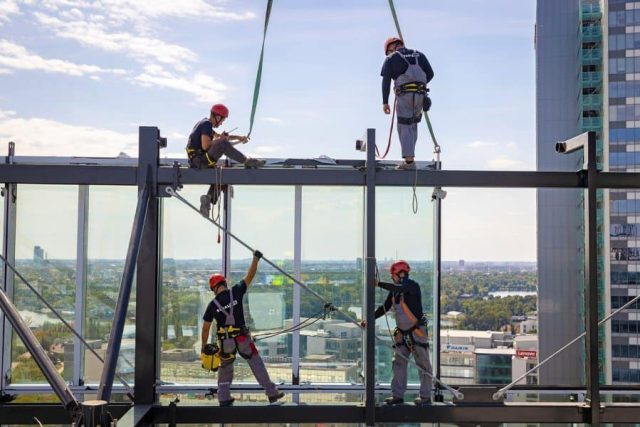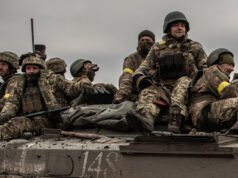Industrial climbers face unique challenges and risks while working at height. Safety is paramount, whether they are scaling towering structures to perform maintenance, conducting inspections on bridges, or carrying out construction tasks on skyscrapers. In these scenarios, specialized fall protection devices play a pivotal part in ensuring the safety and well-being of industrial climbers. These innovative tools are designed to mitigate the risks associated with working at great heights and provide peace of mind to those who depend on them. In this article, you will explore the world of specialized fall protection devices like Stronghold Safety’s fal protection equipment for industrial climbers, examining their types, functionalities, and critical roles in the modern-day industry.
1. Harnessing Safety: Full-Body Harnesses
One of the fundamental elements of fall protection for industrial climbers is the full-body harness. These harnesses are meticulously designed to distribute the force of a fall across the wearer’s body, reducing the risk of injury. Made from high-strength materials, they are built to withstand extreme conditions. Full-body harnesses typically include adjustable straps, chest connections, leg loops, and a dorsal D-ring. This D-ring is the anchor point for attaching lanyards, lifelines, or self-retracting lifelines, ensuring that climbers remain securely tethered to the structure they are working on.
2. Tethered To Safety: Lanyards And Lifelines
Lanyards and lifelines are crucial components of fall protection systems. Lanyards are short, flexible lines that connect the climber’s harness to a secure anchor point. They are designed to absorb the energy of a fall and reduce the impact on the climber’s body. On the other hand, lifelines are longer and often retractable, allowing climbers to move more freely while still maintaining a connection to a secure point. These lifelines automatically retract when not in use, preventing tangling and ensuring ease of movement.
3. Self-Rescue Systems: Descenders And Ascenders
Industrial climbers must not only protect themselves from falls but also be prepared for self-rescue in case of emergencies. Descenders and ascenders are specialized devices enabling climbers to control their descent or ascent safely. Descenders like “Figure 8” and “Rack” provide controlled and gradual descent capabilities, allowing climbers to lower themselves to safety. Conversely, ascenders are used for ascending ropes and structures and are essential tools for efficient climbing.
4. Holding The Line: Fall Arresters And Grabs
Fall arresters and grabs are essential devices that automatically engage in the event of a fall, arresting the fall and preventing further descent. Fall arresters are often used on vertical lifelines and are designed to lock onto the lifeline if a sudden drop in tension is detected. Similarly, grabs are used on horizontal lifelines and function by gripping the line when subjected to a sudden force. These devices are critical in ensuring rapid response to falls and reducing the risk of injury.
5. The Safe Zone: Safety Nets
While personal fall protection devices are essential, safety nets provide additional protection for industrial climbers and workers below. Safety nets are typically installed beneath work areas at height to catch anyone or anything that may fall. They are designed to absorb and dissipate the energy of a fall, reducing the likelihood of injuries. Safety nets are particularly valuable when working on construction sites or in areas with a high risk of falling debris.
6. Keeping A Close Watch: Inspection And Maintenance
Regular inspection and maintenance are imperative to ensure the continued effectiveness of fall protection devices. Industrial climbers, as well as their employers, must prioritize this aspect of safety. Inspection involves checking for components’ wear and tear, damage, and proper functionality, including harnesses, lanyards, lifelines, and descenders. Any compromised equipment should be immediately replaced or repaired by qualified professionals.
7. Regulations And Compliance
Strict regulations and standards govern the use of specialized fall protection devices to ensure the safety of industrial climbers. Organizations, for instance, the Occupational Safety and Health Administration (OSHA) in the United States have established comprehensive guidelines outlining the requirements for fall protection in various industries. Compliance with those regulations is not just a legal obligation but a moral responsibility to protect the lives of those working at heights.
8. The Future Of Fall Protection: Technological Advancements
Innovation continues to drive the development of fall protection devices for industrial climbers. As technology advances, folks can expect to see more sophisticated and user-friendly solutions emerge. Some companies are already exploring the integration of sensors and wearable technology into fall protection gear, providing real-time data on a climber’s safety status. Additionally, there is ongoing research into materials that are durable and lightweight, enhancing climbers’ overall comfort and mobility.
Conclusion
Industrial climbing is fraught with challenges and hazards. Still, specialized fall protection devices like Stronghold Safety’s fal protection equipment serve as a lifeline for those who dare to ascend great heights. Full-body harnesses, lanyards, lifelines, descenders, ascenders, fall arresters, grabs, and safety nets are the unsung heroes of this profession, providing the safety and security that climbers depend on. As the industry evolves, so do these devices, with ongoing technological advancements and a solid commitment to safety driving innovation forward. However, it’s essential to remember that technology alone cannot guarantee safety. Rigorous training, adherence to regulations, and regular equipment inspections are equally vital components of a comprehensive fall protection strategy. Industrial climbers are not just reaching for the skies; they are reaching for a safer, more secure future.














